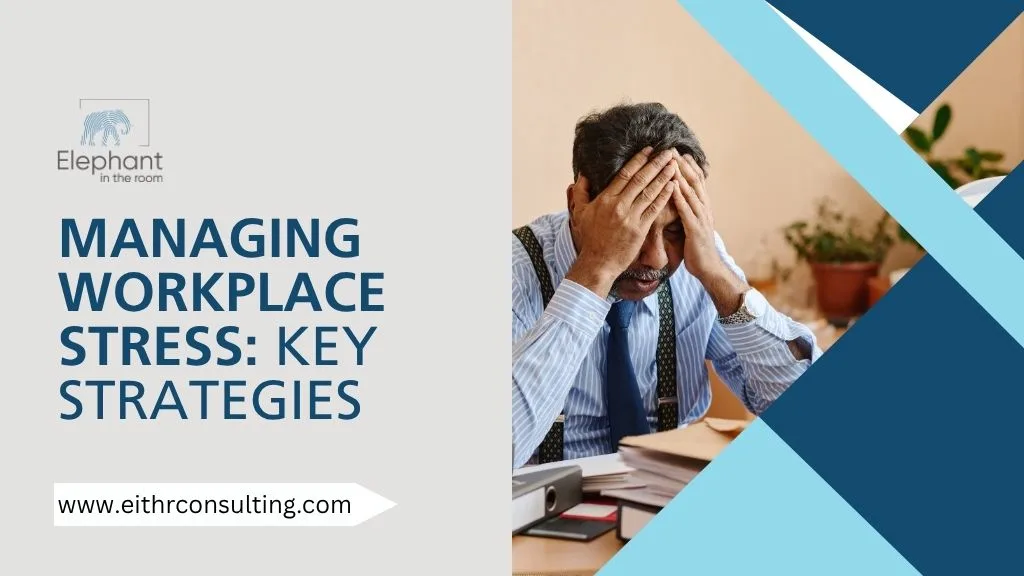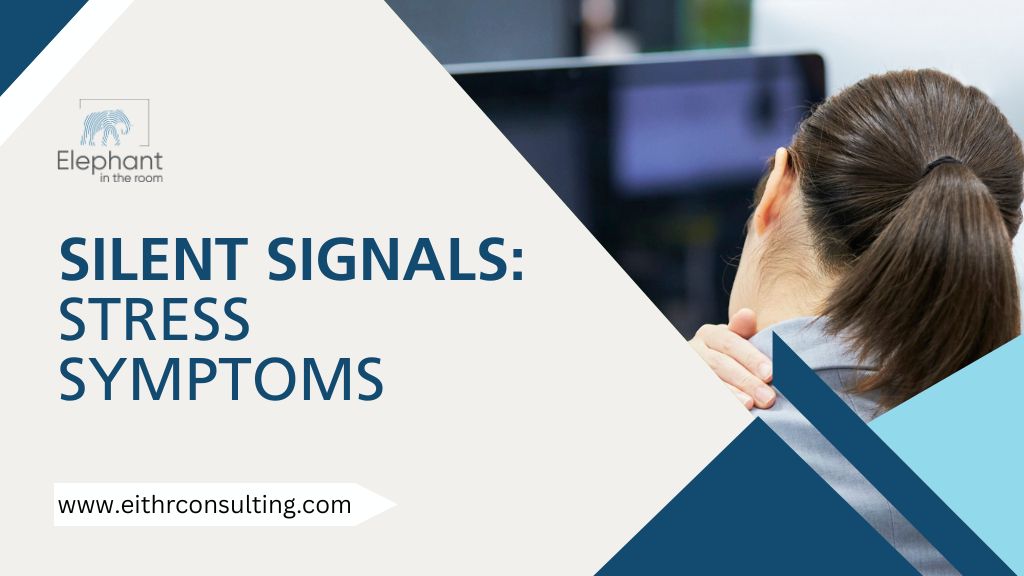Workplace stress has evolved from being a private issue to a global workforce challenge. It silently erodes morale, productivity, and engagement often long before organizations notice the signs. In fast-paced, performance-driven environments, employees are under constant pressure to meet deadlines, multitask, and deliver measurable outcomes. While some level of stress can motivate achievement, prolonged exposure leads to burnout, absenteeism, and declining mental health.
KEY TAKEAWAYS
- Why it matters: Workplace stress affects morale, productivity, and retention managing it is a business necessity, not a wellness trend.
- How to manage it: Equip employees with self-care tools, train leaders to model healthy behaviors, and fix structural causes like workload and unclear processes.
- What works best: Encourage mindfulness, psychological safety, and emotional intelligence while promoting balance, boundaries, and open feedback.
According to the US Department of Labor, 83% of U.S. workers experience work-related stress, and more than half say it impacts their personal relationships. This makes stress management not just a health issue, but a business imperative. By proactively managing stress, organizations can build a culture of resilience, empathy, and sustained performance.
1. Empower Individuals with Self-Care Tools
A healthy workplace begins with empowering employees to care for themselves. When individuals have the tools, resources, and permission to manage stress proactively, they can perform better and recover faster from challenges.
- Digital Self-Care Tools:
Technology can make wellbeing accessible. Mindfulness and relaxation apps offering guided meditations, deep breathing techniques, and gratitude journaling help employees de-stress during work hours. Even brief two-minute sessions can calm the nervous system and boost concentration. These tools are most effective when integrated into daily routines and encouraged by management. - Access to Professional Support:
Providing access to licensed therapists, counselors, or employee assistance programs (EAPs) normalizes seeking help. Confidential counseling helps employees navigate personal or professional challenges before they escalate into burnout. Research shows that workplaces offering mental health support experience up to 25% higher productivity and significantly lower turnover. - Mindfulness and Micro-Breaks:
Encouraging short, mindful breaks during the workday, such as a quick walk, stretching, or focused breathing, can reduce cortisol levels and prevent fatigue. Studies from Harvard Business Review show that regular micro-breaks can improve focus and creativity by nearly 30%. These small pauses, when normalized across the organization, become a productivity booster rather than a time loss. - Stress Management Workshops:
Structured learning sessions that focus on coping mechanisms, time management, and emotional regulation help employees recognize their stressors and develop actionable strategies. These workshops also promote collective learning, enabling teams to share experiences and support one another through practical tools. - Emotional Intelligence Development:
Emotional intelligence (EQ) is one of the strongest predictors of success in managing stress. Training employees to recognize emotions, interpret social cues, and communicate empathetically reduces interpersonal friction and creates a more supportive environment. Higher EQ correlates with better teamwork, improved morale, and fewer conflicts.
2. Equip Leaders to Champion Wellbeing
Leadership behavior directly influences how stress manifests within an organization. When managers and supervisors model healthy habits and compassionate communication, employees feel psychologically safe and supported.
- Recognize Stress Early:
Managers should be trained to observe subtle changes in behavior withdrawal, irritability, or decreased productivity can be signs of distress. Early intervention prevents escalation. A quick check-in conversation or offering flexible arrangements can make a significant difference in how employees cope. - Foster Psychological Safety:
Psychological safety, the belief that one can speak openly without fear of judgment, is the foundation of a healthy team. Leaders should encourage open conversations about workload, mental health, and burnout without stigma. Teams that feel safe to voice concerns are more innovative, engaged, and resilient under pressure. - Promote Healthy Boundaries:
Leadership must model what a healthy work-life balance looks like. This includes discouraging after-hours emails, respecting weekends and vacation time, and emphasizing results over “always-on” presence. When leaders set boundaries, it gives employees permission to do the same, reducing chronic stress and improving long-term performance. - Facilitate Peer Support:
Peer networks, mentorship programs, or informal “check-in” groups create emotional buffers within teams. Knowing that colleagues understand their struggles helps employees feel less isolated. Peer-led wellbeing circles have been shown to reduce stress symptoms and foster stronger connections within organizations.
Stress Management Workshops for Your Organization
Help your teams identify, manage, and reduce workplace stress through our expert-led Stress Management Workshops. Equip employees and leaders with practical tools to build resilience, boost performance, and create a culture of wellbeing. Reach us at +91-9136130525 to book a free consultation. (9am to 6pm IST, Mon–Fri)
3. Optimize Workload and Processes
Sometimes, stress is not just emotional, it’s systemic. Poorly designed workflows, unclear expectations, and constant firefighting create a cycle of chronic pressure. Tackling the structural causes of stress is just as important as addressing the psychological ones.
- Review Workloads Proactively:
Workloads should be assessed regularly to ensure fairness and feasibility. Managers must recognize when team members are overburdened and redistribute tasks accordingly. Rotating responsibilities or hiring temporary support during high-demand periods can prevent burnout and enhance productivity. - Streamline Inefficient Processes:
Clunky approval systems, duplicated efforts, and poor communication channels can frustrate even the most resilient employees. Conducting process audits helps identify bottlenecks that cause unnecessary stress. Simple automation, clearer workflows, and defined ownership reduce confusion and increase efficiency. - Encourage Feedback Loops:
Employees are often the best source of insight into what’s causing stress. Regular surveys, open forums, or suggestion channels help identify pain points early. Acting on this feedback demonstrates trust and inclusion, reinforcing the idea that wellbeing is a shared responsibility.
4. The 5 A’s of Stress Management
The 5 A’s framework provides a simple and practical method for individuals and teams to understand and manage stress effectively:
- Awareness: Recognize the signs of stress, physical tension, irritability, loss of focus and identify what triggers it.
- Acceptance: Acknowledge that stress is part of life and that experiencing it doesn’t signify weakness.
- Assessment: Evaluate which aspects of the situation you can control and which you cannot.
- Action: Take intentional steps to address controllable stressors, delegate tasks, seek clarification, or adjust expectations.
- Attitude: Maintain a positive mindset, focus on learning from challenges, and practice gratitude to build resilience.
This model empowers employees to take responsibility for their mental health while reinforcing a growth-oriented mindset across the organization.
👉 OUR TAKE: Stress management isn’t about eliminating pressure it’s about creating workplaces where people can thrive under it. When leaders empower teams with tools, empathy, and clarity, stress becomes a catalyst for growth, not burnout.
5 Effective Ways to Manage Stress in the Workplace
Beyond frameworks, these five actionable strategies offer day-to-day ways to manage stress effectively:
- Prioritize and Organize:
Breaking large projects into smaller, achievable goals helps reduce overwhelm. Tools like to-do lists, digital planners, and task prioritization frameworks (such as the Eisenhower Matrix) can increase clarity and control. - Exercise Regularly:
Physical activity reduces the body’s stress hormones (cortisol and adrenaline) while boosting endorphins. Encouraging walking meetings, standing desks, or gym reimbursements can motivate employees to stay active and improve their mood. - Maintain Work-Life Balance:
Separating personal and professional time prevents mental exhaustion. Flexible work arrangements and designated “no-meeting” hours allow employees to recharge and return with renewed focus. - Seek Social Support:
Human connection acts as a powerful stress buffer. Encouraging teamwork, social gatherings, or simple acts of kindness strengthens trust and reduces feelings of isolation. - Practice Relaxation Techniques:
Mindfulness, meditation, and controlled breathing exercises have proven physiological benefits—lowering heart rate, improving sleep, and enhancing concentration. These can be taught through short sessions or integrated into the start of team meetings.
» Understand what fuels stress among younger employees and how organizations can respond effectively. Learn more in Workplace Stress in Generation Z: What Drives It and How to Act.
7 Steps in Managing Stress
Organizations can adopt a systematic, long-term approach to stress management using these seven steps:
- Identify the major sources of workplace stress.
- Assess their impact on employees and performance.
- Develop preventive policies that promote mental health.
- Implement practical training and wellbeing programs.
- Encourage open communication and feedback.
- Monitor and measure results regularly.
- Celebrate improvements and reinforce positive behaviors.
This approach ensures stress management becomes part of the organization’s operational rhythm rather than a reactive measure.
Building a Culture of Resilience
Managing stress in the workplace is not about eradicating it; it’s about making it manageable, constructive, and temporary. When organizations invest in their employees’ mental health, they not only prevent burnout but also unlock higher levels of creativity, engagement, and loyalty. A resilient culture is one where individuals feel supported, leaders act with empathy, and systems are designed to sustain both people and performance.
Conclusion: The Elephant in the Room Consulting Advantage
At Elephant in the Room Consulting, we believe that stress management begins with awareness and ends with transformation. Our approach helps organizations go beyond surface-level wellness programs by integrating well-being into leadership, culture, and daily operations. We empower teams to confront “the elephant in the room,” the hidden causes of workplace stress, and replace them with strategies that foster balance, empathy, and lasting productivity.
By combining evidence-based frameworks, psychological insights, and organizational design, we help businesses build environments where employees feel heard, valued, and capable of thriving even under pressure.
Because a workplace that manages stress well doesn’t just perform better, it becomes better.
Frequently Asked Questions
How to manage stress in the workplace?
Manage workplace stress by combining personal strategies like mindfulness, regular breaks, and exercise with organizational support such as clear communication, balanced workloads, and access to mental health resources.
What are the 5 A’s of stress management?
The 5 A’s are:
Awareness – Recognize stress triggers.
Acceptance – Acknowledge stress as normal.
Assessment – Identify what you can control.
Action – Take constructive steps.
Attitude – Maintain optimism and resilience.
What are 5 effective ways to manage stress?
1. Prioritize and plan tasks.
2. Exercise regularly.
3. Maintain work-life balance.
4. Build social support.
5. Practice relaxation or meditation.
What are the 7 steps in managing stress?
1. Identify causes.
2. Assess impact.
3. Develop coping strategies.
4. Apply stress-reduction techniques.
5. Communicate openly.
6. Evaluate outcomes.
7. Reinforce positive habits.




